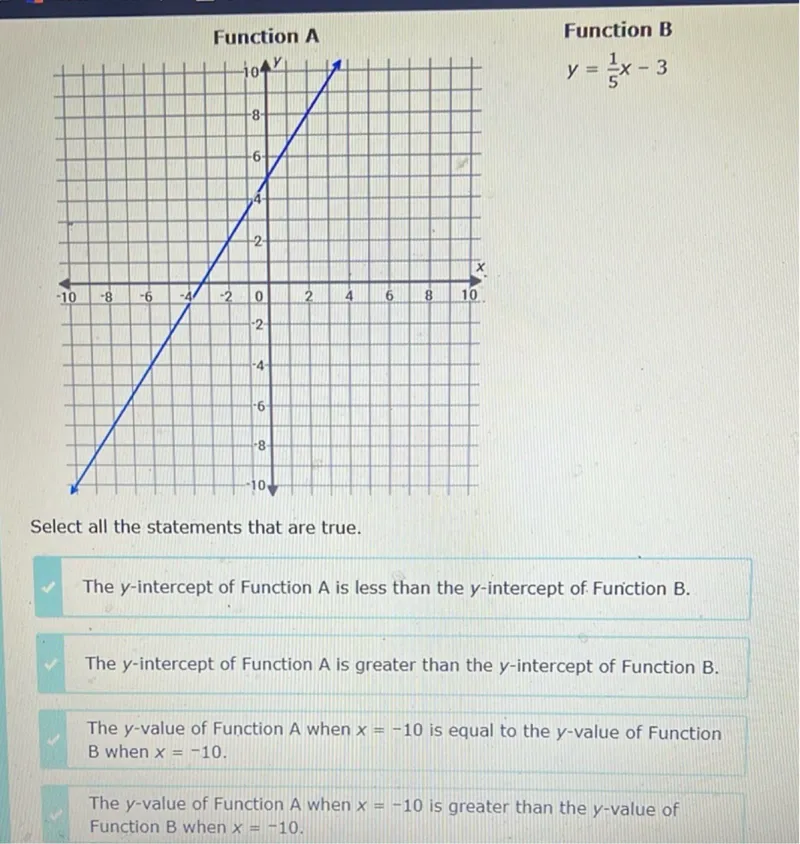Questions: Function A Function B y=1/5 x-3 Select all the statements that are true. The y-intercept of Function A is less than the y-intercept of Function B. The y-intercept of Function A is greater than the y-intercept of Function B. The y-value of Function A when x=-10 is equal to the y-value of Function B when x=-10. The y-value of Function A when x=-10 is greater than the y-value of Function B when x=-10.

Transcript text: Function A
Function B
\[
y=\frac{1}{5} x-3
\]
Select all the statements that are true.
The $y$-intercept of Function A is less than the $y$-intercept of Funiction B.
The $y$-intercept of Function A is greater than the $y$-intercept of Function B.
The $y$-value of Function A when $x=-10$ is equal to the $y$-value of Function B when $x=-10$.
The $y$-value of Function A when $x=-10$ is greater than the $y$-value of Function B when $x=-10$.





